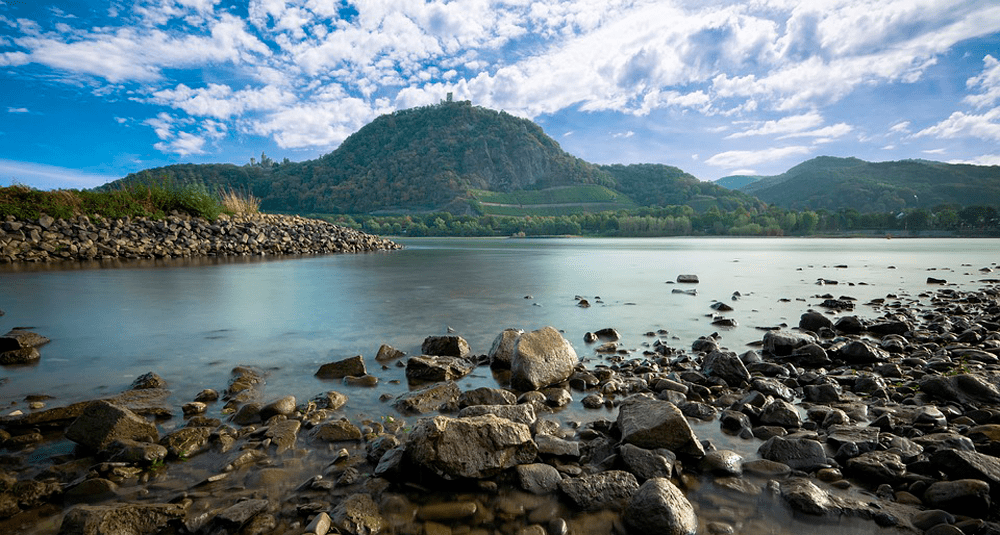What is the longest tributary crossing Germany from the North Sea?
Last Updated:
The Rhine is one of Europe’s major rivers, playing an essential geographical, economic and historical role in Central and Western Europe. With a total length of 1,233 km, it rises in the Swiss Alps, flows through or along six countries: Switzerland, Liechtenstein, Austria, Germany, France and the Netherlands, before emptying into the North Sea.
The Rhine rises in the Swiss Alps, more precisely in the region of the Gotthard Pass. From there, it flows north through eastern Switzerland, forming the natural border between Switzerland and Liechtenstein before entering Germany. In Germany, it flows through a number of major cities, including Basel, Bonn, Cologne and Düsseldorf. It also forms a natural border with France along part of its course.
Once in Germany, the Rhine plays an essential role in river transport, linking crucial industrial regions such as the Ruhr. Its German section is a major trade and shipping route, facilitating the transport of goods not only across the country, but also to the ports of the Netherlands, notably Rotterdam, one of the world’s largest.
After crossing Germany, the Rhine enters the Netherlands, where it divides into several arms before flowing into the North Sea. This complex delta is one of the most densely populated areas in the Netherlands, and is where the Rhine ends its course.
The Rhine has always had great historical importance in Europe. In ancient times, it marked the northern frontier of the Roman Empire and long served as a natural barrier between different cultures. Numerous historic castles and fortresses line its banks, bearing witness to the many conflicts and trade exchanges that took place along the river.
Throughout history, the Rhine has also played a key role in Germany’s industrial development. The Rhine valley is one of the country’s most industrialized regions, with cities such as Cologne and Düsseldorf being major economic centers. The river facilitates the transport of resources such as coal, iron and other raw materials, contributing to Germany’s economic boom.
The Rhine is also a fundamental element of the European river network, linking the industrial regions of Central Europe with the ports of the North Sea, and enabling fluid international trade. Because of its economic importance, it has been equipped with several locks and canals to improve navigation, particularly during periods of low flow.
The Rhine was heavily polluted in the 20th century due to the rapid industrialization of Germany and surrounding countries. However, since the 1980s, major ecological restoration efforts have been undertaken to improve water quality and protect ecosystems along the river. The Action Rhin program, launched after major chemical pollution in 1986, helped restore the river’s flora and fauna. Today, the Rhine is home to numerous species of fish and provides a habitat for a variety of migratory birds.
In addition, the banks of the Rhine offer numerous protected natural areas and are a popular recreational area. Thousands of tourists visit the Rhine Valley every year, famous for its vineyards, picturesque castles and impressive landscapes, including the famous Loreley cliff, a UNESCO World Heritage Site.
The Rhine is much more than just a river. It is a vital artery for the European economy, a witness to the continent’s turbulent history and a place of great ecological wealth. Running through much of Germany, it symbolizes the interconnection of European countries and plays a key role in the region’s economic and cultural development.
You may also be interested in
geography

What is the longest tributary crossing Germany from the North Sea?
Answer
The Rhine is Germany's longest tributary, flowing into the North Sea. It is one of Europe's largest rivers, with a length of 1,233 km.